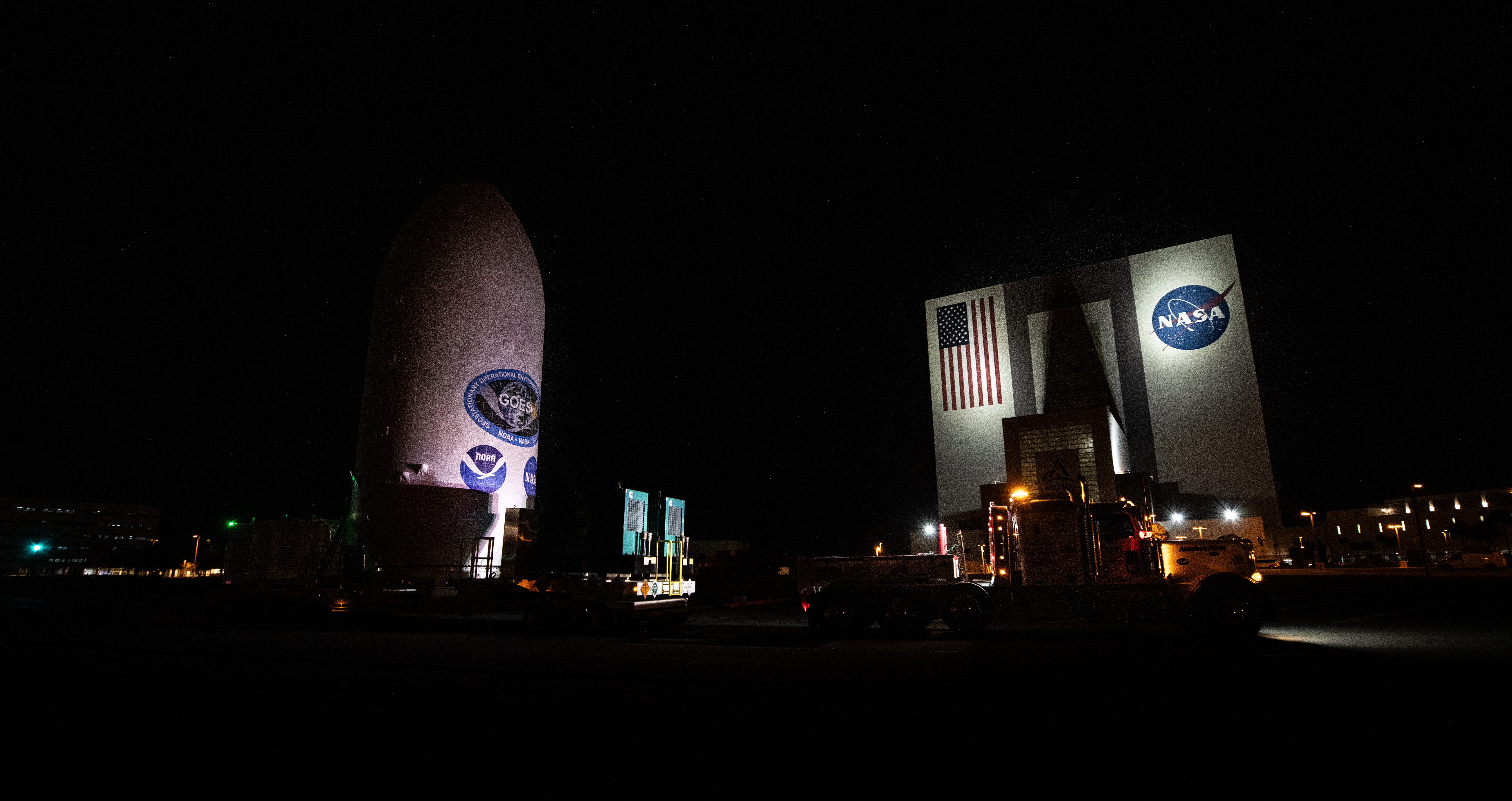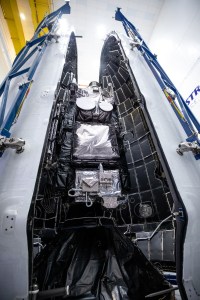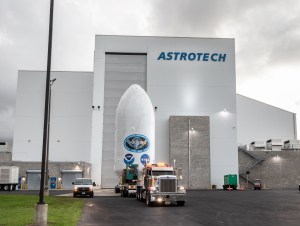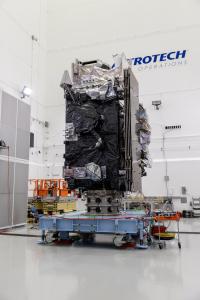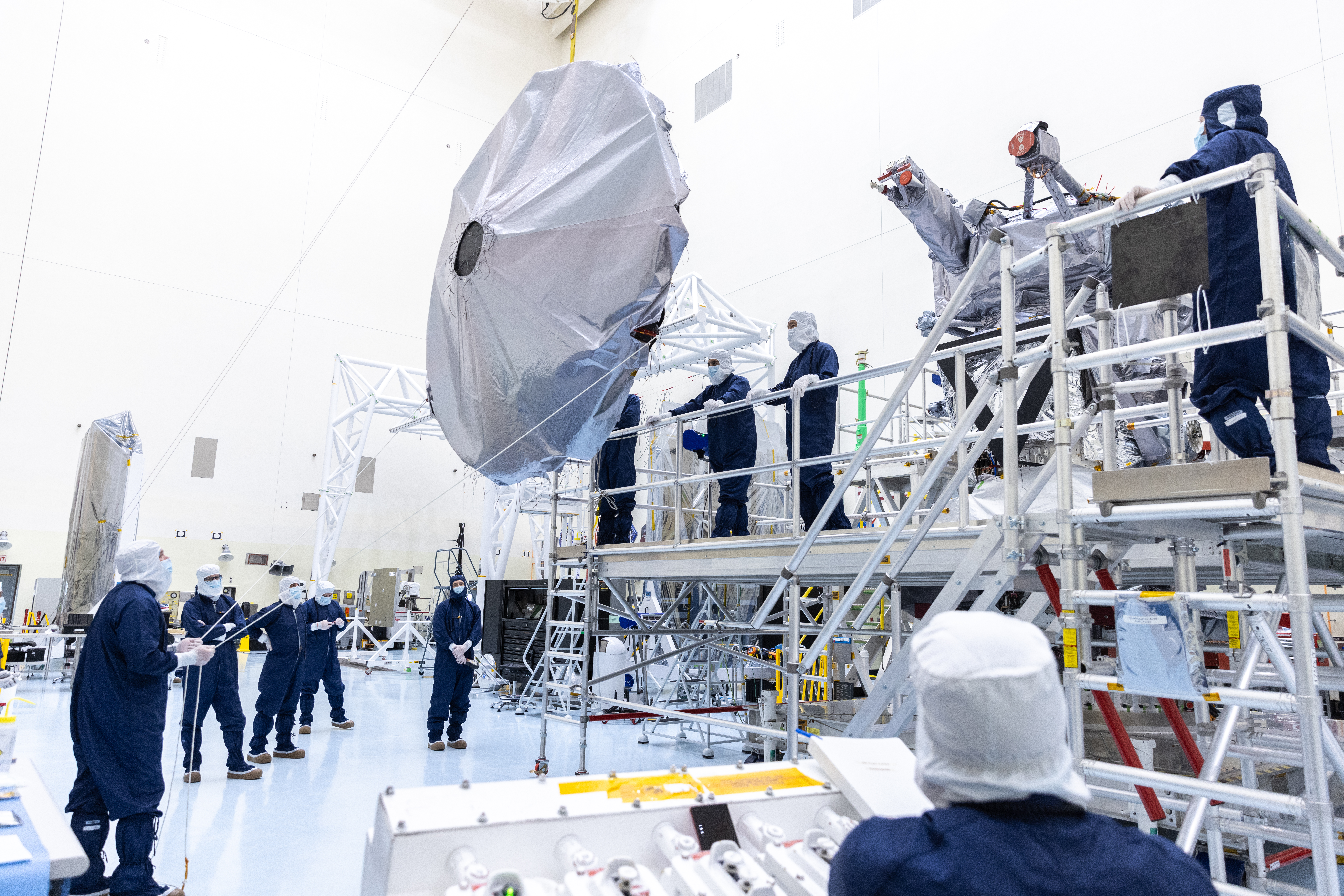
When NASA’s Europa Clipper is in orbit around Jupiter, transmitting science data and receiving commands from Earth across hundreds of millions of miles, it will need a powerful antenna. Technicians installed the spacecraft’s high-gain antenna inside the Payload Hazardous Servicing Facility at NASA’s Kennedy Space Center in Florida on June 17.
Scheduled to launch later this year, Europa Clipper will embark on a 1.8-billion-mile (2.6-billion-kilometer) journey to Jupiter. It is the largest spacecraft NASA has developed for a planetary mission. Set to arrive in April 2030, it will study the gas giant’s icy moon, Europa, to determine its potential to support life.
The spacecraft will conduct approximately 50 flybys of Europa, allowing its nine science instruments to gather data on the moon’s atmosphere, its ice crust, and the ocean underneath. The nearly 10-feet-wide (3-meter) dish-shaped antenna and several smaller antennas will transmit the data to Earth, a trip that will take about 45 minutes when the spacecraft is in orbit around Jupiter.

To ensure Europa Clipper has the necessary bandwidth, the antenna will operate on NASA’s deep space X-band radio frequencies of 7.2 and 8.4 (GHz), and Ka-band at 32 (GHz), through the agency’s Deep Space Network, a global array of large radio antennas that communicate with dozens of spacecraft throughout the solar system.
Europa Clipper underscores NASA’s commitment to exploring our solar system for habitable conditions beyond Earth. Although Europa Clipper is not a life-detection mission, understanding Europa’s habitability will help us better understand how life developed on Earth and whether we’re likely to find conditions that might support life beyond our planet.
Technicians at NASA Kennedy will continue to prepare the spacecraft for its mission and perform final checkouts as part of launch preparations. Europa Clipper is scheduled to launch atop a SpaceX Falcon Heavy rocket from Kennedy’s Launch Complex 39A, no earlier than October 2024.
Europa Clipper’s high-gain antenna was designed by the Johns Hopkins University APL (Applied Physics Laboratory) in Laurel, Maryland, and aerospace vendor AASC (Applied Aerospace Structures Corporation) in Stockton, California.
Managed by Caltech in Pasadena, California, NASA’s Jet Propulsion Laboratory leads the development of the Europa Clipper mission in partnership with APL for NASA’s Science Mission Directorate in Washington. The main spacecraft body was designed by APL in collaboration with JPL and NASA’s Goddard Space Flight Center in Greenbelt, Maryland. The Planetary Missions Program Office at NASA’s Marshall Space Flight Center in Huntsville, Alabama, executes program management of the Europa Clipper mission.
NASA’s Launch Services Program, based at Kennedy, manages the launch service for the Europa Clipper spacecraft.


